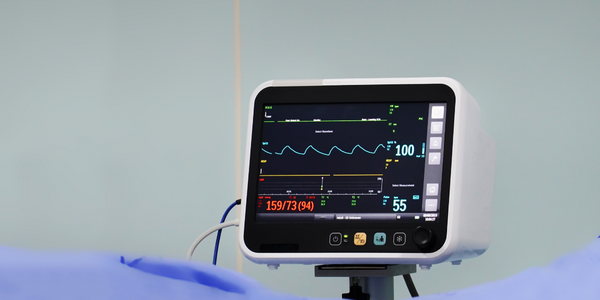下载PDF
Kinseed enables remote patient monitoring

技术
- 分析与建模 - 实时分析
- 功能应用 - 远程监控系统
适用行业
- 医疗保健和医院
适用功能
- 商业运营
用例
- 远程病人监护
挑战
Kinseed 的核心目的是“连接断开连接的人”——无论是人员、信息还是流程。 Kinseed 与大奥蒙德街医院合作,发现了在访问患者数据方面存在的主要差距。在运送到医院期间对患者的监测主要是人工和费力的。不存在实时监控的解决方案,并且移交过程是手动的、缓慢的并且容易出错。
Kinseed 使用标准的床边监视器来跟踪患者的生命体征,创建了一个应用程序来实时访问和分析这些数据,顾问可以通过他们在大奥蒙德街医院的手机和平板电脑或专家在提供护理时居住的任何地方访问这些数据. Kinseed 面临的挑战是连接性。该公司需要一个能够提供可靠和强大连接的合作伙伴,以确保顾问能够毫无问题地访问关键患者数据。
客户
大奥蒙德街医院
关于客户
-
解决方案
Vodafone 托管物联网连接平台使 Kinseed 的 MediConnect 设备能够近乎实时地输出数据,使顾问能够监控每一次旅程,并在发现问题时主动干预。由于医院顾问充分了解历史并在运输过程中直接访问医疗数据,因此患者交接更加顺畅。没有间隙;临床医生可以全面了解患者的医疗数据。
Kinseed 目前正在与其他医院进行谈判,以期在 24 家医院部署该解决方案,而 Vodafone 服务提供了快速扩展的规模。
数量效益
相关案例.

Case Study
Hospital Inventory Management
The hospital supply chain team is responsible for ensuring that the right medical supplies are readily available to clinicians when and where needed, and to do so in the most efficient manner possible. However, many of the systems and processes in use at the cancer center for supply chain management were not best suited to support these goals. Barcoding technology, a commonly used method for inventory management of medical supplies, is labor intensive, time consuming, does not provide real-time visibility into inventory levels and can be prone to error. Consequently, the lack of accurate and real-time visibility into inventory levels across multiple supply rooms in multiple hospital facilities creates additional inefficiency in the system causing over-ordering, hoarding, and wasted supplies. Other sources of waste and cost were also identified as candidates for improvement. Existing systems and processes did not provide adequate security for high-cost inventory within the hospital, which was another driver of cost. A lack of visibility into expiration dates for supplies resulted in supplies being wasted due to past expiry dates. Storage of supplies was also a key consideration given the location of the cancer center’s facilities in a dense urban setting, where space is always at a premium. In order to address the challenges outlined above, the hospital sought a solution that would provide real-time inventory information with high levels of accuracy, reduce the level of manual effort required and enable data driven decision making to ensure that the right supplies were readily available to clinicians in the right location at the right time.

Case Study
Gas Pipeline Monitoring System for Hospitals
This system integrator focuses on providing centralized gas pipeline monitoring systems for hospitals. The service they provide makes it possible for hospitals to reduce both maintenance and labor costs. Since hospitals may not have an existing network suitable for this type of system, GPRS communication provides an easy and ready-to-use solution for remote, distributed monitoring systems System Requirements - GPRS communication - Seamless connection with SCADA software - Simple, front-end control capability - Expandable I/O channels - Combine AI, DI, and DO channels

Case Study
Driving Digital Transformations for Vitro Diagnostic Medical Devices
Diagnostic devices play a vital role in helping to improve healthcare delivery. In fact, an estimated 60 percent of the world’s medical decisions are made with support from in vitrodiagnostics (IVD) solutions, such as those provided by Roche Diagnostics, an industry leader. As the demand for medical diagnostic services grows rapidly in hospitals and clinics across China, so does the market for IVD solutions. In addition, the typically high cost of these diagnostic devices means that comprehensive post-sales services are needed. Wanteed to improve three portions of thr IVD:1. Remotely monitor and manage IVD devices as fixed assets.2. Optimizing device availability with predictive maintenance.3. Recommending the best IVD solution for a customer’s needs.

Case Study
HaemoCloud Global Blood Management System
1) Deliver a connected digital product system to protect and increase the differentiated value of Haemonetics blood and plasma solutions. 2) Improve patient outcomes by increasing the efficiency of blood supply flows. 3) Navigate and satisfy a complex web of global regulatory compliance requirements. 4) Reduce costly and labor-intensive maintenance procedures.

Case Study
Harnessing real-time data to give a holistic picture of patient health
Every day, vast quantities of data are collected about patients as they pass through health service organizations—from operational data such as treatment history and medications to physiological data captured by medical devices. The insights hidden within this treasure trove of data can be used to support more personalized treatments, more accurate diagnosis and more advanced preparative care. But since the information is generated faster than most organizations can consume it, unlocking the power of this big data can be a struggle. This type of predictive approach not only improves patient care—it also helps to reduce costs, because in the healthcare industry, prevention is almost always more cost-effective than treatment. However, collecting, analyzing and presenting these data-streams in a way that clinicians can easily understand can pose a significant technical challenge.





